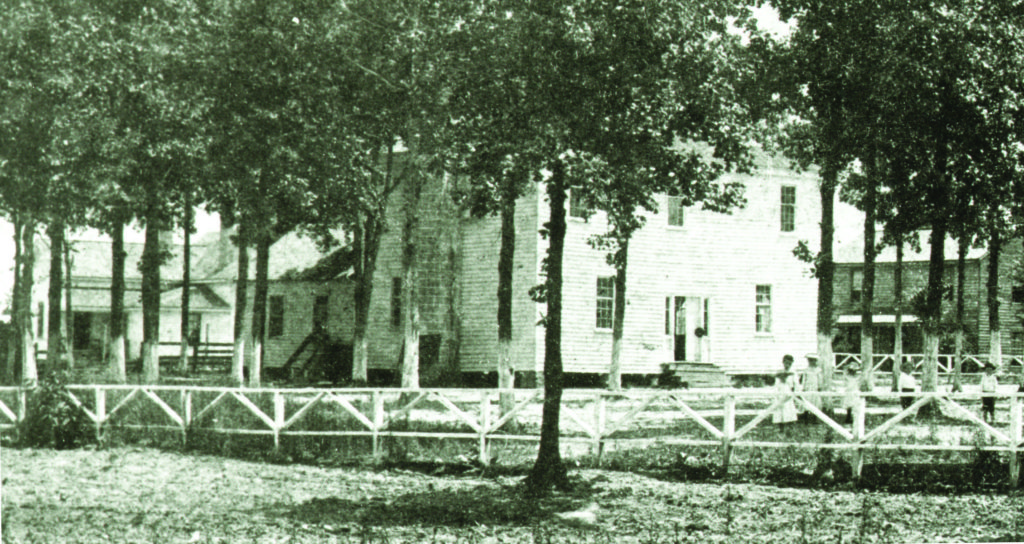
These wonderful old homes have witnessed history first hand and if they could talk, one can only imagine the stories they could tell. We continue our tour of the historic homes along Raleigh Street; this time we will focus on the west side of the street starting at Ballentine Street and heading north toward Holly Springs Road.
Organized and chartered in 1847 with the lodge building constructed soon after, the Masons were active in the community, as evidenced by the number of dedicated cornerstones on buildings, which include the lodge itself, the Holly Springs United Methodist Church and the Alford-Lashley-Dewar Store. Listed on the National Registry of Historic Places, it is thought to be the oldest lodge and school building in Wake County. By 1854, the all-male Holly Springs Academy was formed to prepare young men to attend Wake Forest College. The lodge was utilized until their school building could be built. Parents boarded their sons with local families during the school week. By 1856, the lodge was used as a school for girls as the Holly Springs Academy building was completed. Both schools were closed with the onset of the Civil War and it was not until 1878 that town leaders, led by George Benton Alford, opened the coeducational boarding school at the lodge named the Holly Springs Institute.
In history that is more recent, known as the Community Building by locals, the first floor was used as a location for town meetings, wedding receptions and birthday parties. Although, no dancing was allowed due to the proximity to the Baptist church. Some of the old-time residents recall with “not such fond memories” of a particular club that met at the Community Building.
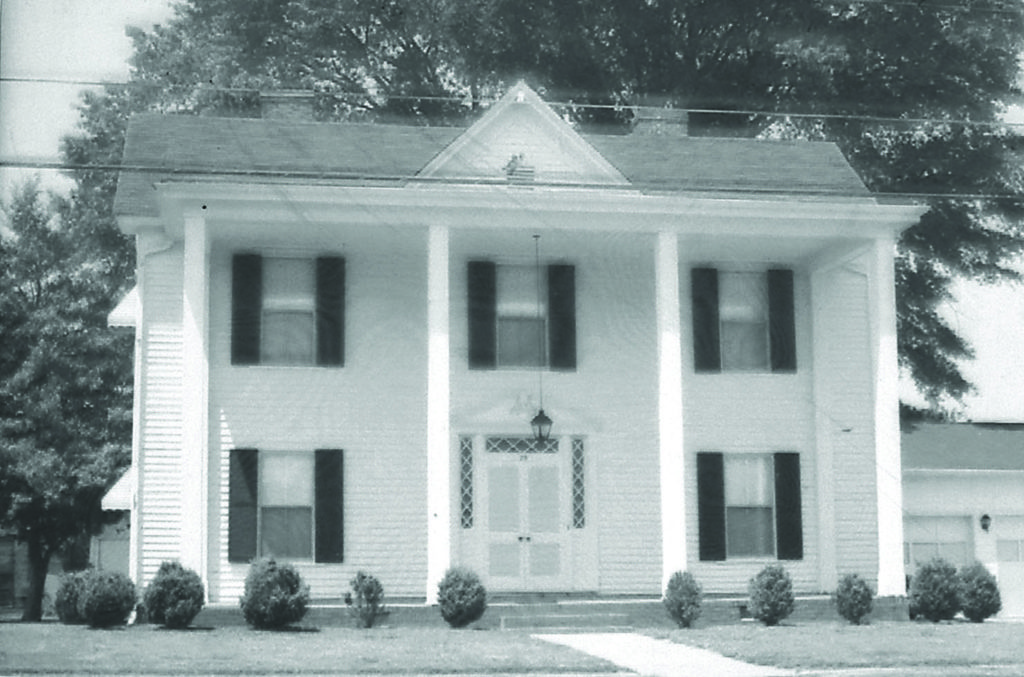
Jason Hobby built this house in the early
1900s for his widowed sister Annette Utley.
The present porch and columns were added later. By the 1940s, Stephen Bethel Wright and his wife Margaret Mims, daughter of Marcus and Delcie Collins-Mims, lived in the house. Their son James Bethel Wright, had his family home moved to its current location behind the Leslie-Alford-Mims house to make way for the Office Condos on Raleigh Street. The Utley-Wright House is now the home of 919 Marketing.
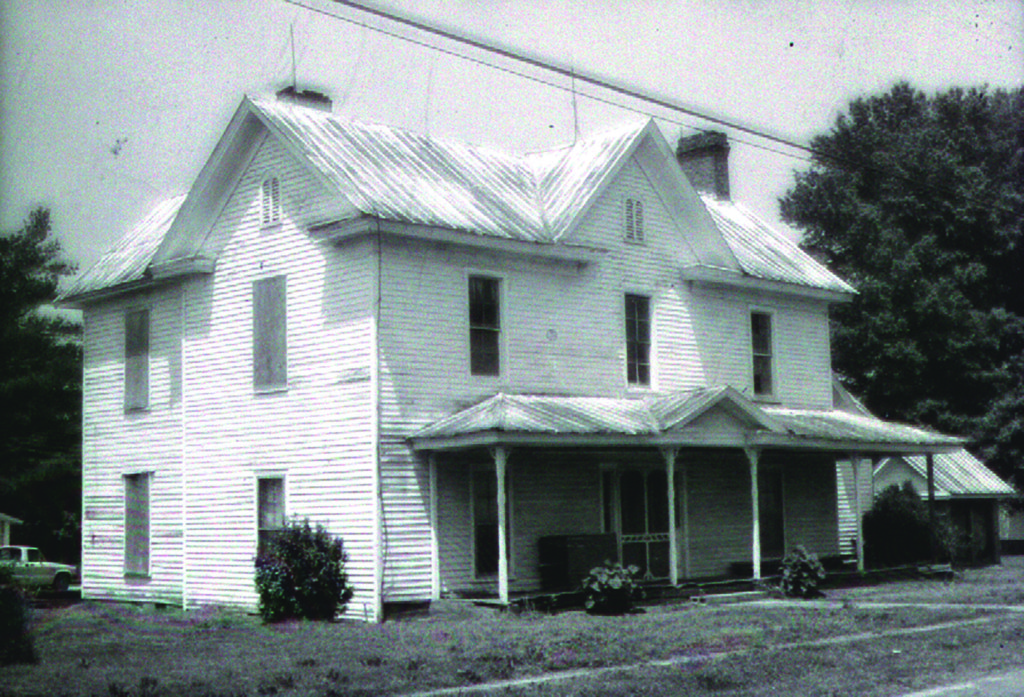
This beautiful Victorian home was built in the 1880s by J. Frank Carter for his brother Joseph Randall Carter and his bride the former Annie Eliza Norris, daughter of Peyton & Dulcenia Utley-Norris.
J. Randall Carter and his brother J. Frank ran a store located at the corner of Raleigh & Ballentine Streets built circa 1850. The Carter Brothers general store branched out in two specialty directions: drugs and fancy groceries. They advertised J. R. Carter was druggist, dealing also in toilet articles and J. F. Carter became a ‘Dealer in Fancy Groceries’. His stock included tobacco, snuff, meal, flour, sugar, coffee, molasses, soda water, ginger-pop and ice. At one time, the building served as the post office, mail slot visible in the door where its patrons could drop their letters. Old-timers say that part of the store in the 1880s was made into a saloon. The upstairs of the structure served as the local undertaking parlor. Carter & Sons carried a wide range of makes and a variety of caskets. When someone in the community died, they just came in, selected a casket and often times returned home to bury their loved ones in the family plot. For those who wanted and could afford the finer things in life, Carter offered the services of his stallion-drawn hearse for their last ride to the town cemetery. Ernie Brewer bought the old store in the early 1930s and he ran his store there until it was torn down in 1958. The Carter-Brewer house, which sat next to the Utley-Wright House, suffered the same fate as the old store and it was torn down in the late 1980s.
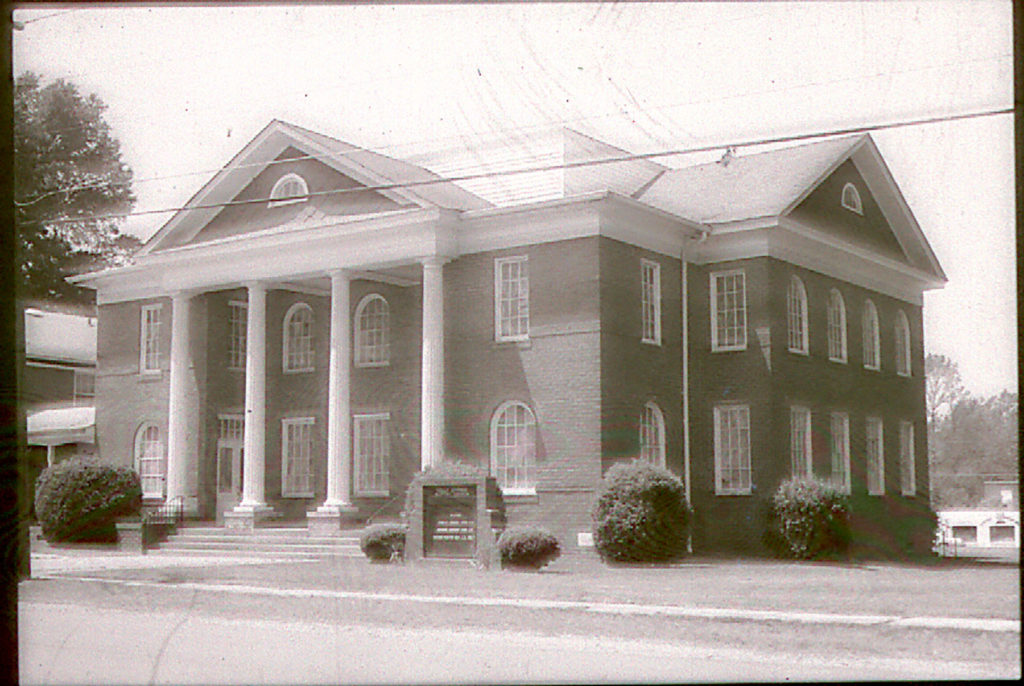
Built around 1923, this Neo-classical Revival architectural style building is the second home for this congregation.
Organized in 1822, their original building sat near the Leslie-Alford-Mims house on land conveyed to the Trustees of Holly Springs Missionary Baptist Church by Archibald Leslie by deed dated May 12, 1855. Baptist church leaders had a law enacted that no merchant could sell alcohol within 1 square mile in any direction of the church; this law was rescinded in the late 1960s. The old building was sold on April 13, 1928 to the “last and highest bidder Arcavius “Cave” Utley and his wife Ellen for $200.00 the said purchase price including lot No. 1 of said property and the church building located thereon, subject to the removal of all church furniture contained therein.”
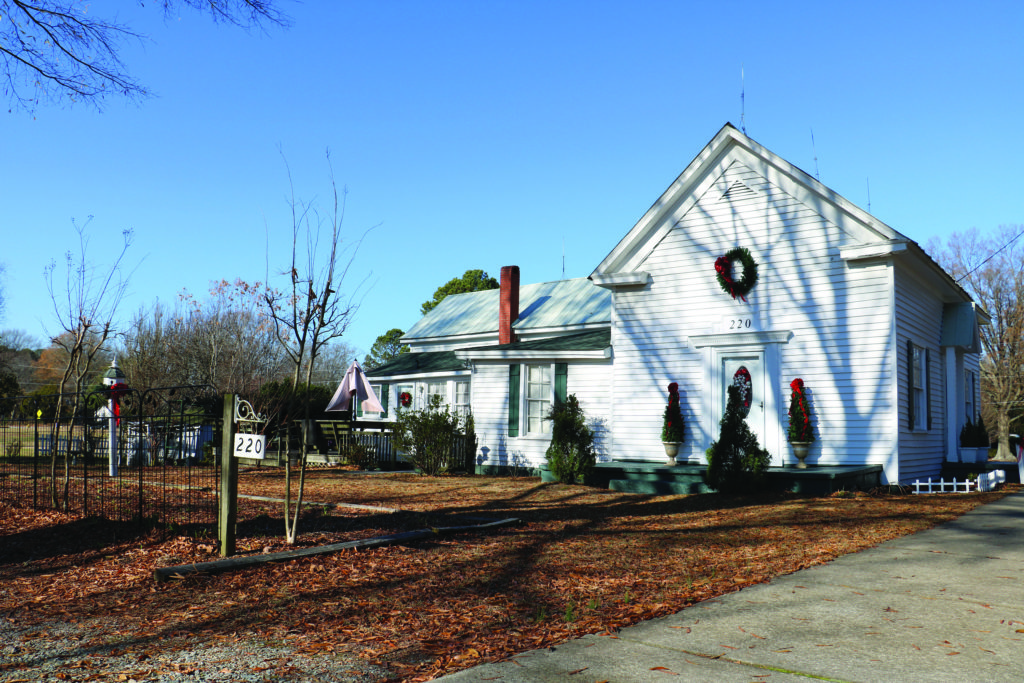
The exact date of construction of this house is unknown. An old picture of the Holly Springs Institute taken circa 1880s is the best indication that the house was in existence at that time.
Deeds search showed that the parcel was conveyed to Georgiana Templeton in 1905 by the heirs of Nathan B. Burns; in 1913 to T.B. Johnson & his wife Mary Templeton-Johnson; then from T.B. Johnson to a Lula Poe; and finally Lula Poe sold the house to Maude Duncan in 1938. The Duncan family, Rufus, Maude and their children, moved up from Harnett County to the little house on Raleigh Street. Current owner Margaret Duncan-Fuquay was little when they moved into Holly Springs. She recalls the house was in desperate need of paint and the wallpaper on the inside was cracked and peeling. It was during the time of the “Great Depression” and hard times fell on just about everyone in town. Her father was a plumber by trade and work was scarce. The family had a garden plot as most families did. Margaret recalls life being very simple, almost like living in the country. Her parents continued living in the house after she and her siblings were all grown and gone. Margaret and her husband Stephen “Boo” Fuquay moved into the old homestead in order to help with her aged mother after the death of her father in 1955. The Fuquays raised their daughters in the old house and Margaret enjoyed planting beautiful flower beds to enjoy from the sunporch.
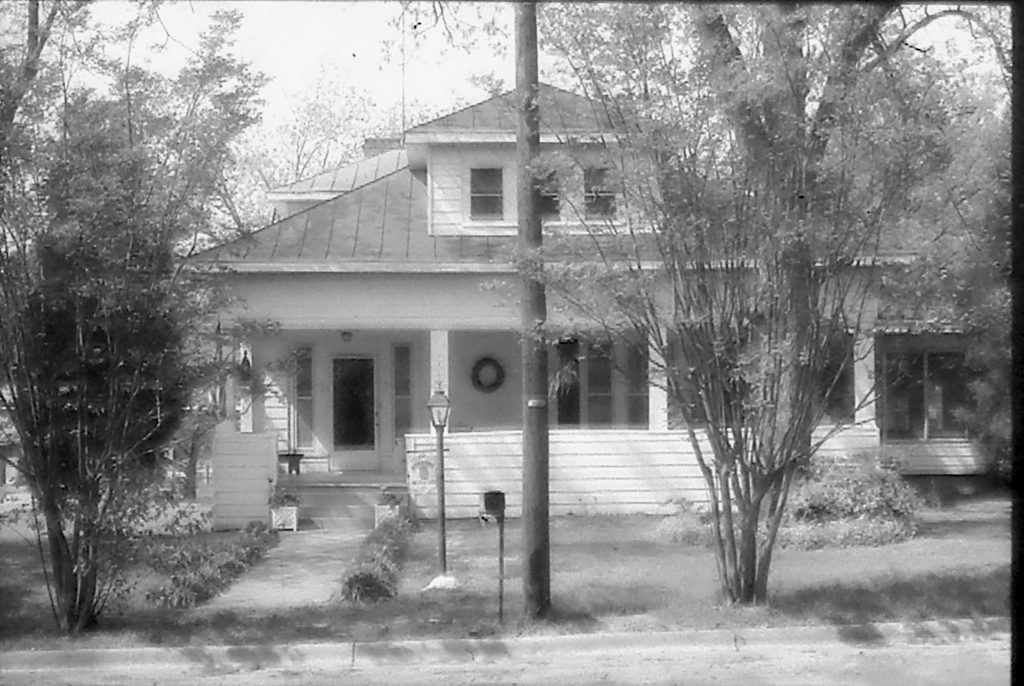
Green Haywood Alford, son of George Benton and Charlotte Alford, built this Arts & Craft style bungalow house around 1915.
Purchased from Alford in 1942, Paul Cummings and his wife Kathryn Baker-Cummings raised their two children, Freddie & Vada in the house. Paul ran the convenience store-garage on Main Street. Having grown up and still residing in this house, Vada Cummings-Fiegler describes the beautiful oak woodwork trim, the sets of pocket doors and the excitement as a teenager with the addition of a second bathroom for her brother and her upstairs!
She has such fond memories of when Holly Springs was a much slower-paced community, where no one locked their doors and everyone knew everyone. The post office was then located in the building where Four Oaks Bank currently is, and Vada recalls crossing Main Street to retrieve the mail for her parents. Vada and her husband, Josef Fiegler have maintained the architectural integrity of the home and have preserved many of the period features so popular in the style of home.